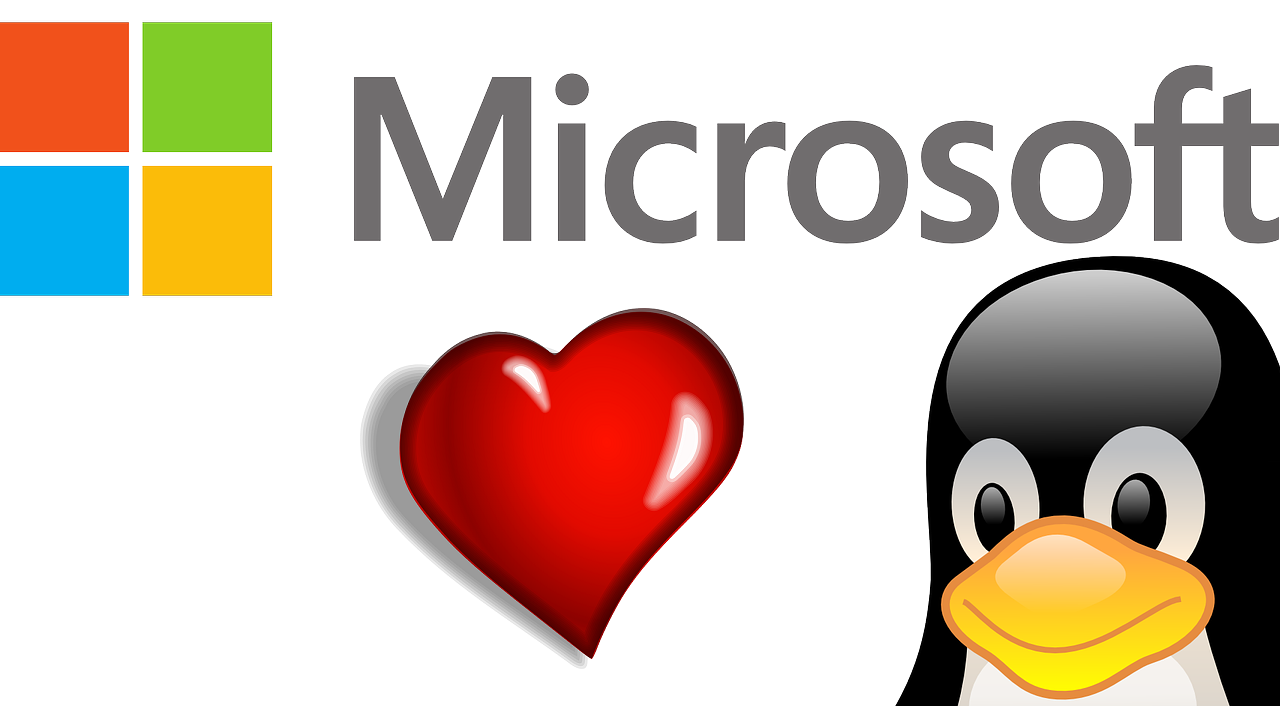Open source or bust?
 $34 billion! That’s what Big Blue (IBM) recently put forward to acquire the world’s most prominent open source company, Red Hat. What a massive vote of confidence for the free and open source software (FOSS) development model! As a long time FOSS advocate, I’m going to be really mature about all this…and…blow a huge raspberry at all the detractors who have, for years, dismissed the movement as a ‘fad’ that allegedly delivers poor quality, insecure and legally dubious products. You all were so wrong; frankly, the modern pervasiveness of open source technology even surprises me at times!
$34 billion! That’s what Big Blue (IBM) recently put forward to acquire the world’s most prominent open source company, Red Hat. What a massive vote of confidence for the free and open source software (FOSS) development model! As a long time FOSS advocate, I’m going to be really mature about all this…and…blow a huge raspberry at all the detractors who have, for years, dismissed the movement as a ‘fad’ that allegedly delivers poor quality, insecure and legally dubious products. You all were so wrong; frankly, the modern pervasiveness of open source technology even surprises me at times!
I’m going to stick my neck out with a prediction: over the next decade, technology companies that don’t invest in building collaborative communities around their products, will become a rarity. This is not about tacking on cool buzzwords whilst otherwise carrying on as usual. It’s about survival. Nokia found this out the hard way, when it was effectively wiped out by increasingly tough competition from Apple and Google Android smartphones—both driven by a solid OS, built on strong FOSS foundations.
 Back in 2001, when then Microsoft CEO Steve Balmer described Linux—the open source UNIX OS variant—with ‘C-words’ the frustration was somewhat understandable. Having besieged Netscape, and looking like the winner of the ‘first browser war,’ new threats appeared on the horizon. Firstly, its web browser dominance was called into question by the EU competition authorities, leading to costly legal battles. Secondly, with the release of Netscape Communicator’s source code and consequent emergence of Mozilla’s powerful Firefox browser, continued dominance was far from guaranteed. Indeed, by 2009, at least one in three users were doing their Web surfing via Firefox.
Back in 2001, when then Microsoft CEO Steve Balmer described Linux—the open source UNIX OS variant—with ‘C-words’ the frustration was somewhat understandable. Having besieged Netscape, and looking like the winner of the ‘first browser war,’ new threats appeared on the horizon. Firstly, its web browser dominance was called into question by the EU competition authorities, leading to costly legal battles. Secondly, with the release of Netscape Communicator’s source code and consequent emergence of Mozilla’s powerful Firefox browser, continued dominance was far from guaranteed. Indeed, by 2009, at least one in three users were doing their Web surfing via Firefox.
Fast forward to 2016 and Microsoft presented, what could be, the greatest about-turn in technology history! Announcing that it now ‘loves’ Linux and open source, the news came as quite a shock to FOSS enthusiasts like myself. Yet, under the leadership of Satya Nadella, Microsoft has engaged in a number of key initiatives that actually does put some weight behind these positive sentiments. The recent $7.5 billion acquisition of GitHub, the world’s largest open source repository, is just the latest in a series of love bombs.
Even Apple has been taking effort to appear more warm and cuddly to open source developers. Earlier this year the Cupertino giant released its ARM optimised source code for its desktop and mobile operating system kernel (macOS and iOS). And that too on GitHub, of all places! While these OSs were already based on the open source, Darwin OS—as eluded earlier—what makes this move interesting is the extent to which Apple is willing to open up: the kernel is the most crucial element of an OS. What the heck is going on?
 Open source offers many advantages over proprietary solutions, but innovation and quality, rather than cost, are amongst the primary reasons for its massive impact. Of the most exciting tech trends—blockchain, VR, big data analytics, machine learning, IOT and all the rest—open source tools have played a leading role in their development. This is exactly the reason why Tesla Motors removed a load of its patents and started releasing the source code for software that runs its cars! There was just no other way of taking on long established car makers. Uber appears similarly committed.
Open source offers many advantages over proprietary solutions, but innovation and quality, rather than cost, are amongst the primary reasons for its massive impact. Of the most exciting tech trends—blockchain, VR, big data analytics, machine learning, IOT and all the rest—open source tools have played a leading role in their development. This is exactly the reason why Tesla Motors removed a load of its patents and started releasing the source code for software that runs its cars! There was just no other way of taking on long established car makers. Uber appears similarly committed.
Therein lies a strong reason why the future belongs to open source models: society has come to expect rapid technological progress and there isn’t currently anything that can compete with masses of enthusiasts willing to utilise precious free time, helping solve real problems, at no apparent cost. Whether through acting as guinea pigs for early software builds, providing tech support or indeed actually helping fix bugs, it’s simply not feasible to employ thousands of QA testers, tech support personnel or programmers in-house—and that too for a single product! Moreover, with the community spread out all around the world, there’s also the diversity of thought and user experience that simply can’t be replicated in some ‘head office.’
Demographic changes and skills shortages in US and Europe will likely accelerate this process. Technology companies will find it increasingly difficult to hire the right talent and will have no choice but to explore other development models, including open source. Particularly at a time when the strategy of opening up economies to greater levels of immigration is falling out of favour!
 So, what actually motivates volunteers and how are these loyal communities built? Well, it requires some investment. These people aren’t really working for free: there’s always a quid pro quo! Some of the following strategies have traditionally helped build an army of volunteers:
So, what actually motivates volunteers and how are these loyal communities built? Well, it requires some investment. These people aren’t really working for free: there’s always a quid pro quo! Some of the following strategies have traditionally helped build an army of volunteers:
- The project must have a vision or story that’s worth contributing towards. Even doing something truely cutting edge might be enough to get people rallying around your product: the Apple and Tesla fanbois are a case in point.
- Providing tools that can be used entirely, or partly, free of charge—and more importantly: tools that users are free to tinker with and modify. There’s nothing that gives hobbyists energy more than the freedom to play with the innards of machines and software.
- Ensure that your project has some decent starter documentation that’s easy to read and attractive. This will provide the initial intrigue and curiosity. By all means have the more comprehensive documentation available too, but some slick graphic design and easy to read typesetting goes a long way.
- Having developers, designers and product managers on your payroll can help provide some structure and stewardship, helping inform the product’s roadmap and channeling community energy towards positive commercial ends. It also shows confidence and commitment from key stakeholders.
- Once your have all of the above then it’s just the case of putting some marketing bucks behind the project: social media campaigns, workshops and seminars, competitions etc.
- Once a community for your project comes into being, it’s important that it is nurtured. Volunteers want to feel loved and appreciated.
 But how do companies afford this sort of investment; how is it profitable? Well, a complete lack of investment in community building could easily render your product irrelevant and, therefore, the question rather becomes: can companies actually afford not to engage in this way? Users are no longer tolerating vendor lock-in and want to be promiscuous with technology: your product will only be used for as long as it continues to add value and if something else comes along, better fitting their requirements, they’ll move on.
But how do companies afford this sort of investment; how is it profitable? Well, a complete lack of investment in community building could easily render your product irrelevant and, therefore, the question rather becomes: can companies actually afford not to engage in this way? Users are no longer tolerating vendor lock-in and want to be promiscuous with technology: your product will only be used for as long as it continues to add value and if something else comes along, better fitting their requirements, they’ll move on.
The future—indeed, the present—of digital products is one where users are active participants in something that’s continuously evolving, not passive consumers. There appears no better way of ensuring user engagement and long term relevance than enabling a healthy community to flourish. As mentioned earlier: when users are free to tinker, modify and share things without being subject to lawsuits, this can lead to a strong sense of trust and love for your product. The community thus becomes a source for all things good, including free marketing, free testing, free ideas and even free data!
When committed to FOSS, there are several business models that have succeeded and can be considered. Other newer models and innovations will inevitably emerge.

Closing comments:
There was a time when the term ‘open source’ was banded about willy-nilly and with a great deal hype—some big tech companies got burned in the process! Open source today is no longer hype: products developed in this manner continue to leave immeasurable footprints throughout industry, from tiny IoT devices, to the world’s fastest super-computers and even space technology. As largely a matter of necessity, the FOSS model is here to stay: most large tech companies are heavily invested in open source development.
Without community participation, it’s very easy for a large gap to develop between user expectations and actual product experience. Owning all patents and copyrights is fine, but when it’s for stuff that generates only short-term interest, well, then you have a problem that could have been more easily overcome with loyal community support.
